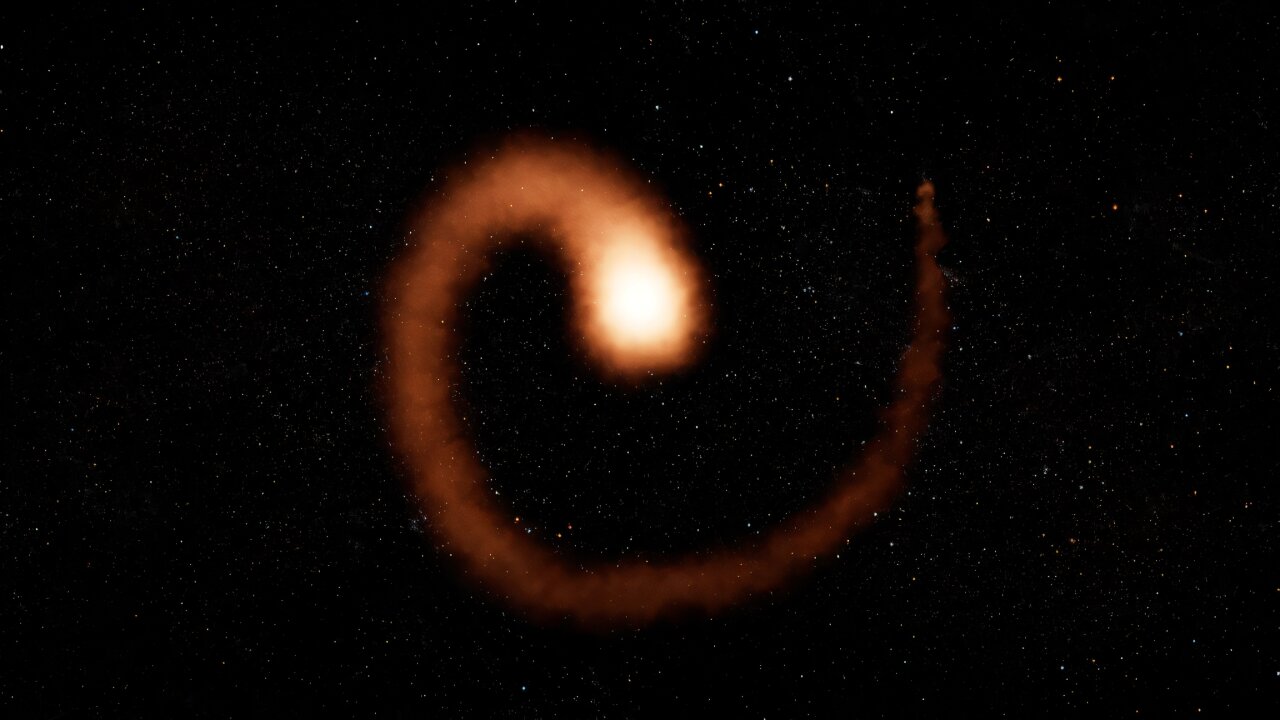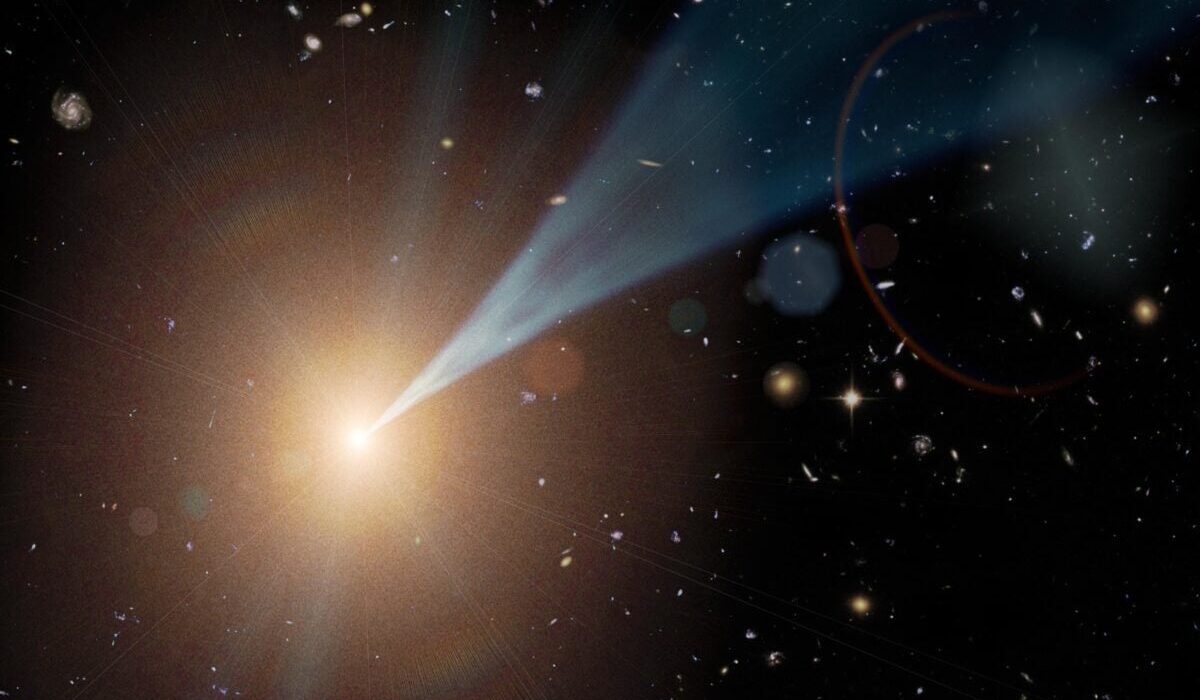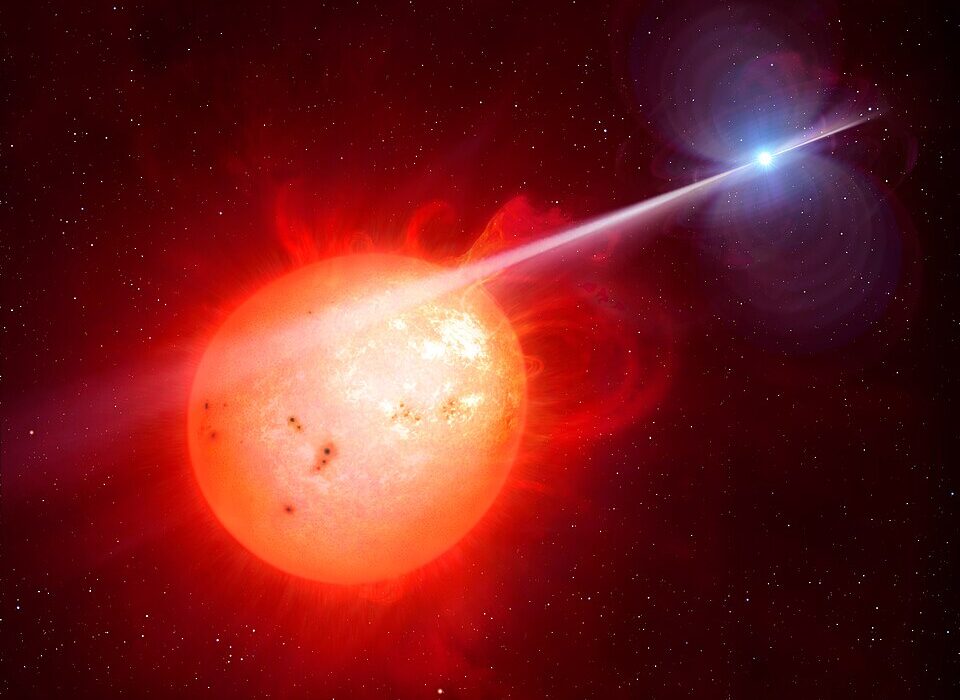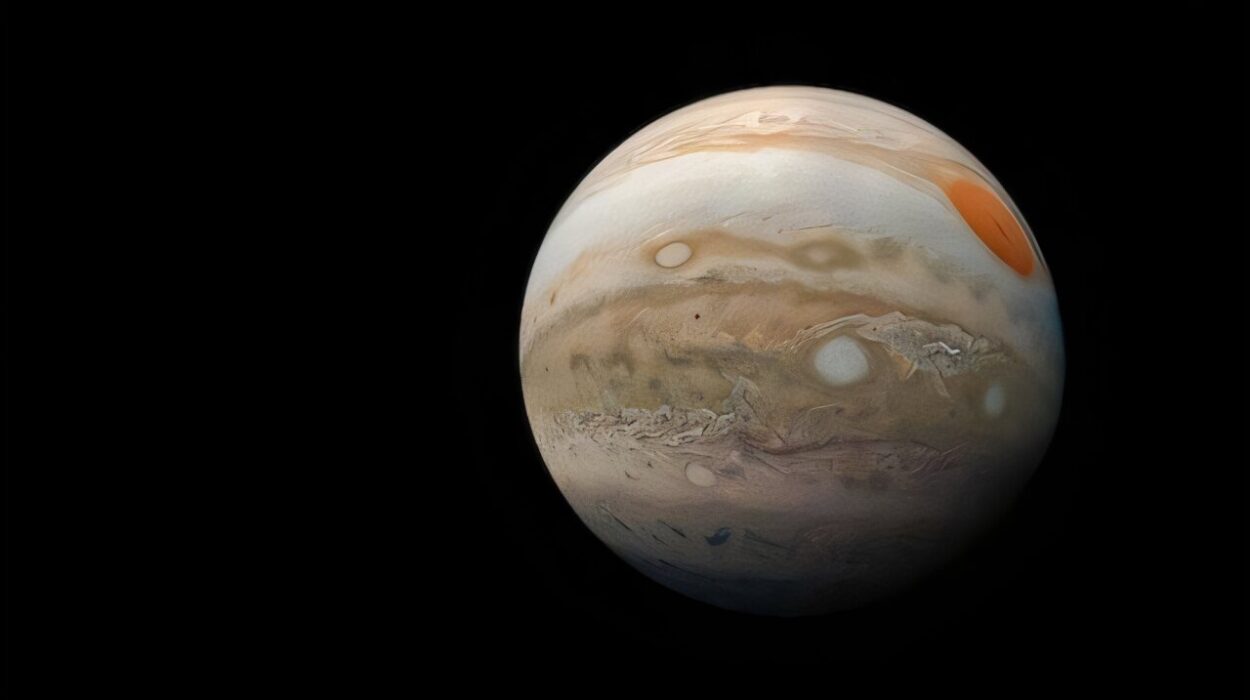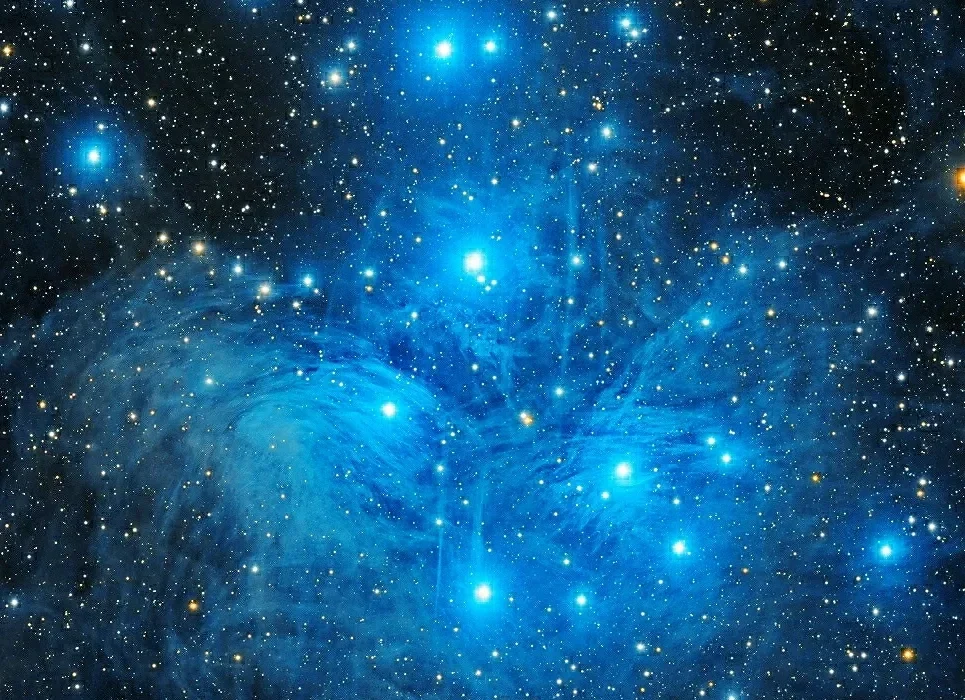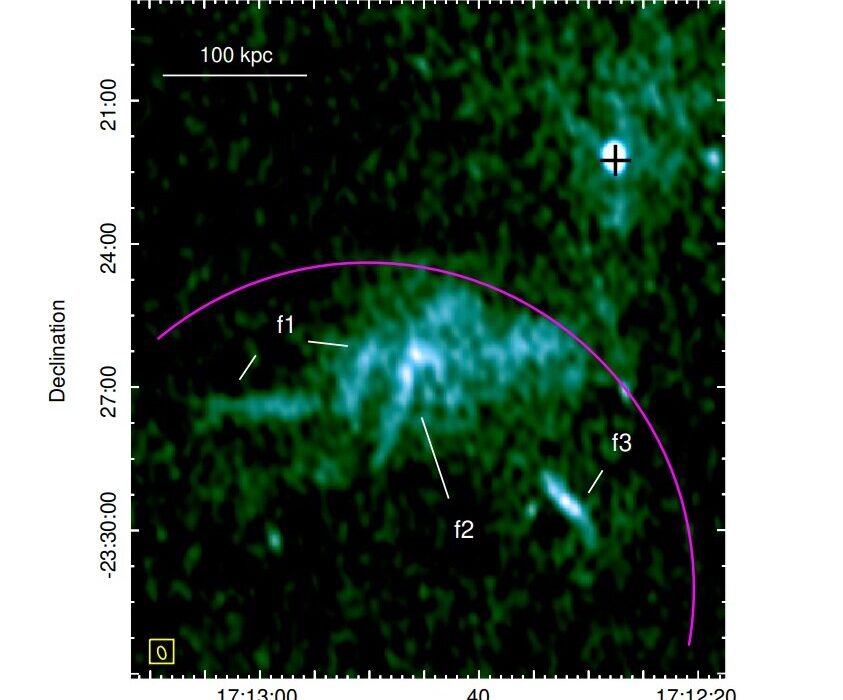For years, WR 104 has captivated astronomers with its haunting beauty and ominous potential. Nestled about 8,000 light-years away in the constellation Sagittarius, this distant system has been nicknamed the “Death Star” due to fears it could one day unleash a deadly gamma-ray burst (GRB) aimed directly at Earth. But new research by Grant Hill, Instrument Scientist and astronomer at the W. M. Keck Observatory, has thrown a fascinating twist into the WR 104 story—one that both soothes cosmic anxieties and deepens the mystery of this extraordinary star system.
Published in the Monthly Notices of the Royal Astronomical Society, Hill’s findings confirm what scientists long suspected: WR 104 is a binary system, home to not one but two massive stars locked in an intimate, high-energy dance. Yet, what’s truly surprising is how this stellar duo behaves—a discovery that may change how we think about stellar winds, dust formation, and the mechanisms that create the most powerful explosions in the universe.
A Twisting Tale of Two Stars
At the heart of WR 104 lies a pair of enormous stars orbiting each other every eight months. One is a Wolf-Rayet star, an aging, massive stellar furnace that has stripped away its outer layers, exposing a core that spews a ferocious wind loaded with carbon and other heavy elements. The other is a younger but even more massive OB-type star, blasting out a wind rich in hydrogen. As these stellar winds collide at incredible speeds, they create shockwaves that forge carbon-based dust particles—tiny cosmic soot—that spiral outward in a swirling pinwheel pattern.
This pinwheel, first imaged in 1999 at the Keck Observatory, is more than just beautiful—it’s a blueprint of the dynamic forces at play in the WR 104 system. Glowing brightly in the infrared, the spiral dust plume spins with the same eight-month period as the stars themselves, providing a luminous signature of their orbital waltz.
A Dangerous Alignment?
When WR 104’s pinwheel was first discovered, it immediately sparked concern. Early models suggested that we were looking straight down the barrel of this spinning dust spiral, as if observing a sprinkler from directly overhead. That implied the poles of the Wolf-Rayet star—and possibly its future supernova explosion—might also be pointed at us.
This was no idle speculation. Wolf-Rayet stars are ticking time bombs. At the end of their lives, they can explode as supernovae, and in some cases, generate gamma-ray bursts—beams of radiation so powerful they could sterilize an entire planet across thousands of light-years. If WR 104 were to unleash a GRB aimed at Earth, it would be like standing in the path of a cosmic death ray. Hence the ominous nickname: the “Death Star.”
Spectroscopy Reveals a Twist
But Hill’s research tells a different story. Using three of Keck Observatory’s powerful instruments—the Low Resolution Imaging Spectrometer (LRIS), the Echellette Spectrograph and Imager (ESI), and the Near-Infrared Spectrograph (NIRSPEC)—Hill meticulously analyzed the light coming from WR 104. By studying its spectra, he was able to measure the velocities of both stars, chart their orbit, and identify telltale features caused by their colliding winds.
What he found was unexpected. Despite appearances, WR 104 isn’t spinning neatly on a face-on axis aimed at Earth. The orbit of its two stars is tilted by at least 30 to 40 degrees out of the plane of the sky. In simpler terms: we are not in the line of fire.
“When I started this project, I thought the main focus would be the colliding winds, and a face-on orbit was a given,” Hill explains. “Instead, I found something very unexpected.”
For those worried about a nearby GRB, this is a cosmic sigh of relief. The tilt of WR 104’s orbit makes it much less likely that a future supernova or gamma-ray burst would be directed at Earth. But this revelation also raises new questions: if the stars’ orbit is tilted, why does the dust plume appear face-on? Shouldn’t the dust follow the same plane as the orbit?
A New Cosmic Puzzle
The discrepancy between the tilted orbit and the seemingly face-on dust spiral suggests there’s more going on in WR 104 than previously thought. Is there a complex interaction between the stellar winds that shapes the dust spiral independently of the stars’ orbital plane? Are magnetic fields playing a role in sculpting the structure? Or is there something even stranger at work?
“This is such a great example of how with astronomy we often begin a study and the universe surprises us with mysteries we didn’t expect,” Hill reflects. “We may answer some questions but create more. In the end, that is sometimes how we learn more about physics and the universe we live in.”
Indeed, WR 104 is not done surprising us yet. Understanding how dust forms in these intense environments could shed light on how the first dust in the universe was created, enriching galaxies with the building blocks for stars, planets, and life itself.
Wolf-Rayet Stars: Giants on the Edge
Wolf-Rayet stars like WR 104 are among the most extreme objects in the cosmos. They’re massive, hot, and wildly unstable. Their powerful winds can strip away several Earth masses of material every year, and their lifespans are incredibly short by cosmic standards—just a few million years compared to the Sun’s 10-billion-year lifetime.
These stars are crucial players in the life cycle of galaxies. The heavy elements they forge and eject into space seed future generations of stars and planets. And when they die, their spectacular supernovae can trigger waves of star formation in nearby regions.
But Wolf-Rayet stars are also dangerous. Their intense radiation and supernova blasts can sterilize nearby worlds. The possibility of a GRB makes them even more frightening, but Hill’s work on WR 104 reminds us that even the most alarming cosmic scenarios require careful observation and evidence.
Looking Ahead: What WR 104 Teaches Us
Hill’s study of WR 104 is a testament to the power of modern astronomy and the importance of taking a closer look. What appeared to be a straightforward case—a binary star system spinning in a predictable way—turned out to be far more complex and fascinating.
As scientists continue to study WR 104 and other Wolf-Rayet systems, we may gain new insights into how massive stars live, die, and shape the cosmos. Future observations with even more powerful telescopes, like the James Webb Space Telescope or the upcoming Extremely Large Telescope, could provide clearer views of these distant, deadly giants and their beautiful pinwheel spirals.
For now, WR 104 continues to turn silently in the dark, its luminous spiral a beacon of both danger and wonder. Thanks to Hill’s groundbreaking research, we can rest a little easier, knowing Earth is safe from its wrath. But in astronomy, as in life, the universe always holds more secrets—waiting for someone curious enough to look.
Reference: G M Hill, Is WR 104 a face-on, colliding-wind binary?, Monthly Notices of the Royal Astronomical Society (2024). DOI: 10.1093/mnras/stae2183
